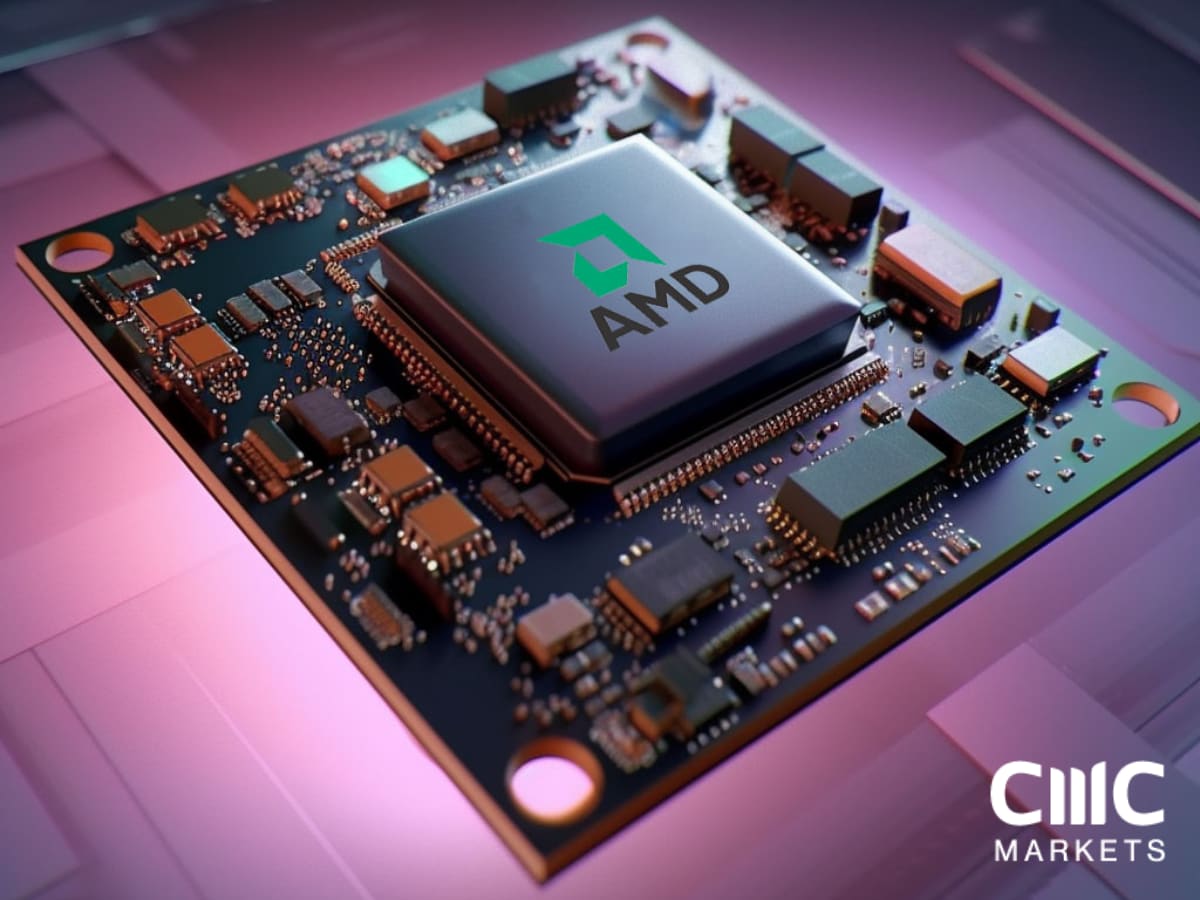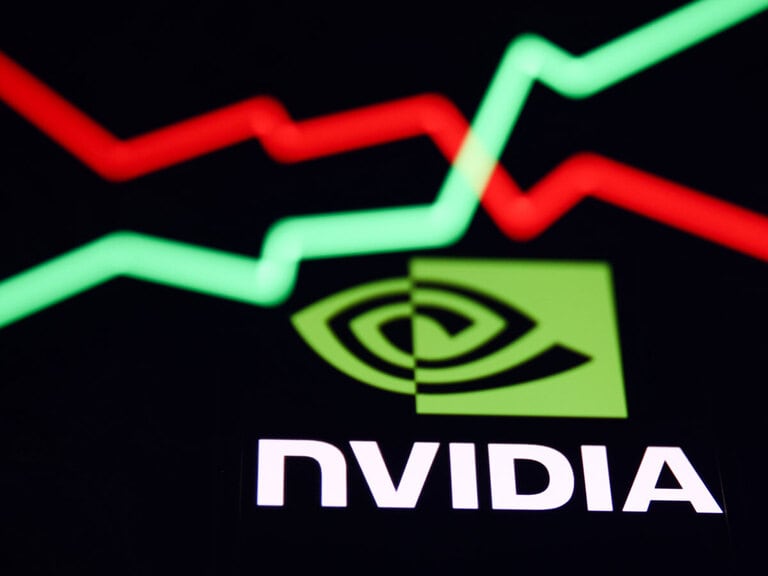The semiconductor industry has gone from feast to famine. During the pandemic, there was a major global shortage of chips, and now we have started to experience the reverse as a result of the slump in demand bought about due to the tech downturn. It's certainly been a tumultuous year for semiconductor investors and traders. Despite these hazards, the semiconductor industry has outperformed on a year-to-date basis, with large-cap semiconductor stocks like AMD and Nvidia beating returns generated by the S&P 500 and Nasdaq indices.
Curious as to what the future holds for the chip sector? Here's our take on the semiconductor industry outlook as we provide a deep dive into potential headwinds and tailwinds that will likely impact market darling semiconductor stocks like AMD and Nvidia ahead of their 2023 Q1 earnings announcements.
What Are Semiconductor Stocks?
Semiconductor stocks are the shares of companies that produce and sell semiconductors, a critical component used to manufacture virtually all electronic products. These stocks can be placed into two main categories: memory chip manufacturers, such as Micron Technology (NASDAQ: MU), and integrated device manufacturers, including companies like Advanced Micro Devices (NASDAQ: AMD) and Nvidia Corporation (NASDAQ: NVDA).
Why Are Semiconductors So Important?
The semiconductor industry is a significant contributor to the global economy. From electric vehicles to video gaming consoles, the semiconductor sector forms the foundation for technological developments that shape our world and drives an enormous amount of technological innovation. These factors are the likely catalysts that have seen semiconductor stocks explode in popularity, sending bullish tech investors on a buying spree to try and capitalise on the growth opportunities that seem so obvious.
Unfortunately, the lucrative nature of semiconductors has also attracted attention from government bodies seeking to use them as a political tool. The most recent example would be the ongoing struggle of the USA to try and manage its semiconductor supply chain in order to protect its national interests.
The Potential Upside of Investing in Semiconductor Stocks
The Exciting Future of Artificial Intelligence
One of the perceived upsides expected from investing in semiconductor stocks is the increasing adoption of artificial intelligence (AI) and machine learning. In order to meet the booming demand for AI-capable hardware and software, AI industry leaders will require hardware setups with tonnes of processing power. That's where silicon chips and semiconductors come into play. With the powerful computing power of graphic processing units from companies like AMD and Nvidia, AI leaders can continue to innovate and pursue new breakthroughs without fear of a bottleneck on their existing computing power.
The CHIPS Act and Increased Government Spending
Another major factor that could drive semiconductor stocks higher is the implementation of the CHIPS and Science Act; a federal statute authorised by the Biden administration in 2022 that aims to bring semiconductor manufacturing to the US. By supporting American semiconductor companies, getting them to invest in research and development, and incentivising foreign direct investments in the US semiconductor industry, the CHIPS and Science Act is expected to boost US semiconductor production capacity and lower prices for consumers. Additionally, creating a hub for semiconductor manufacturing in the US will assist in diversifying the global supply chain, thus preventing a replay of the semiconductor shortages experienced not too long ago.
The Potential Risks of Investing in Semiconductor Stocks
The Geopoliticisation of the Semiconductor Industry
As previously mentioned, the USA is going head-to-head with China for semiconductor supremacy on the global stage. While most of the world's electrical devices rely on Taiwan Semiconductors (NYSE: TSM) as the world's biggest contract chipmaker due to their superior technology, this has unfortunately created a stranglehold on the entire chip sector given the tense relations between China and Taiwan. In response to the rising competition from China's booming semiconductor industry, the US introduced the CHIPS Act . The US has even gone as far as to claim that it will "never let China gain hold of Taiwan's semiconductor factories" and will destroy them if necessary. This rhetoric is largely the result of unresolved tension between these two global superpowers that has to some degree driven away semiconductor investors and traders who are now waiting for geopolitical stability to return before getting involved again.
Falling Demand
According to Taiwan Semiconductors' latest Q1 earnings report, semiconductor demand has declined recently. Despite reporting quarterly earnings that exceeded market expectations, the semiconductor giant has lowered its industry outlook by predicting a full-year revenue drop of approximately 10%. This certainly doesn't bode well for the future of the chip sector as it's the first time they've lowered their industry outlook since 2009, with many investors looking at Taiwan Semiconductors as the bellwether stock for the semiconductor sector.
Now that you better understand the potential benefits and risks of investing in the semiconductor sector let's look at two popular stocks that will soon report their Q1 earnings.
AMD Technical Analysis
With reference to AMD's chart above, AMD's stock price seems to be on a downtrend with the recent turn in the tech sector thanks to underwhelming earnings from big tech companies like Tesla and Netflix.
Areas that bullish traders for AMD should look out for is a potential bounce off the $83.50 support line and the retesting of the $102 resistance line.
On the bearish side of things, bearish AMD traders will be looking out for a possible dip past the $83.50 support line and a potential gap fill at the $75-$76 range.
NVDA Technical Analysis
With reference to NVDA's chart above, there is little doubt that this stock is heavily correlated with the overall performance of the tech sector - which has been down lower as of late.
Bullish NVDA traders who are confident that Nvidia will be able to continue bucking the bearish trend and reclaim its all-time high price can consider taking a long position at a price close to the $262 support line. They can then opt to close their trade at the $280-$290 supply zone.
Conversely, NVDA traders keen on establishing a short position might want to hold off on short selling until NVDA emphatically breaks through the $262 support. Once this happens, NVDA shares might plunge to fill the gap at the $211-$223 demand zone.
The Bottom Line
Even though industry leaders predict a near-term downswing thanks to escalating geopolitical tensions and weakening demand, the semiconductor industry is poised to remain strong over the next few years. With tailwinds like the passing of the CHIPS and Science Act that's projected to boost demand for production and technological growth and the continued developments in the AI industry, semiconductor investors with a longer investing time horizon may have a good point in having a bullish semiconductor industry outlook and investing in semiconductor stocks.






